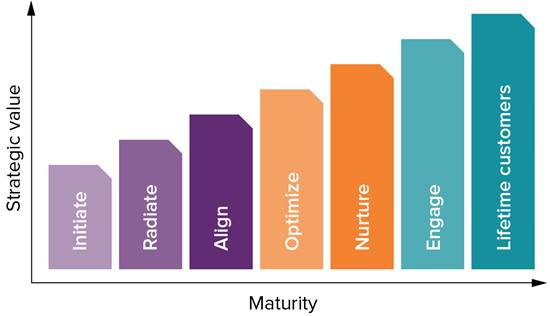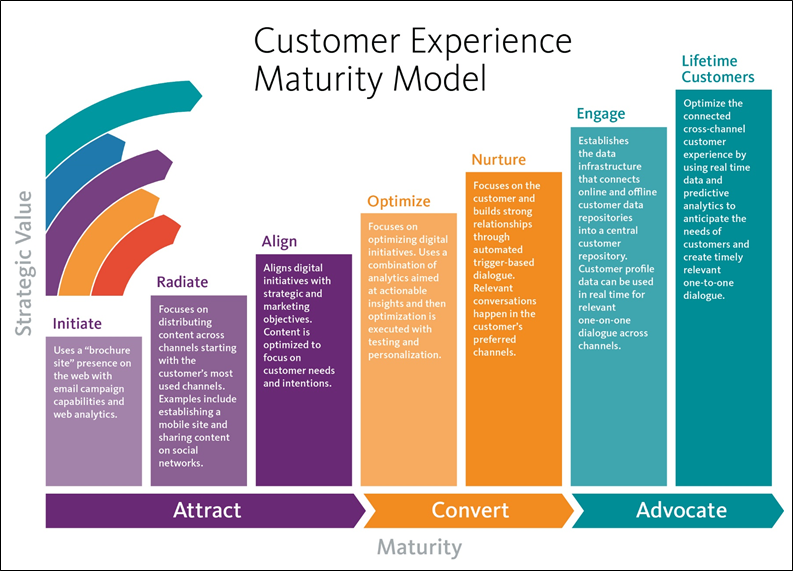In this post we will focus on Radiate Stage which is Stage 2 of Sitecore Customer Experience Maturity Model. It is a second stage of “Attract” phase.
What does it mean to be on “Radiate stage”?
I will start here with the definition from “Connect” book.
In Stage 2, Radiate, marketing organizations are more concerned with reaching their customers through the appropriate channels.
It means that on this level you have started to think about your customers. You do not focus only on your offer and products – you understand that you have to know your clients better. That change in your understanding indicates your next actions – work on segmentation of your clients and accessibility on all channels.
Omnichannel
Omnichannel sounds like something ridiculously complicated but if you will check what exactly it means you will be surprised how easy it is.
Wikipedia defines Omnichannel in following way:
Omnichannel is a cross-channel business model that companies use to increase customer experience. ….. bla bla bla ….. including channels such as physical locations, FAQ webpages, social media, live web chats, mobile applications and telephone communication. Companies that use omnichannel contend that a customer values the ability to be in constant contact with a company through multiple avenues at the same time.
In one sentence: always be there where your clients are! If you know/think that your customers use Facebook – you should be there. If you know/think that your customers would use mobile app to know you offer better – you should give them mobile app.
What is cool in Sitecore – no matter which channel you will pick from the list – Sitecore already have a solution for you!
Check this site for more details: http://www.sitecore.net/products/sitecore-experience-platform/cross-channel-delivery
Segmentation
Because you already know that you should not present the same things for all customers you have to split people for segments. There is no one simple answer for question “how split customers for segments” because every group of customers is different – you probably know your customers better than I do, so you will find the way to split them.
What can determine simple segments assignment:
- gender
- age
- location
- selected goods
- campaigns
- registration details
- many more other things
You probably noticed that I wrote “simple segments” – I did that because on this level you still know only groups of your customers not concrete people (You will know them better later).
What I have to do to move to the next stage?
Next step for you is “Stage 3 – Align”. In next blog post I will describe details but for now you should be aware that you have solid basis and you are ready to “Align digital initiatives with strategic and marketing Objectives”
Please keep in mind that this article is just an overview - later, in next articles or in brand new series I will prepare "deep dive" into digital maturity. Stay with me, on my blog and learn more together!
 Chart from http://www.sitecore.net/getting-started/maturing-digitally/cx-maturity-model
Chart from http://www.sitecore.net/getting-started/maturing-digitally/cx-maturity-model